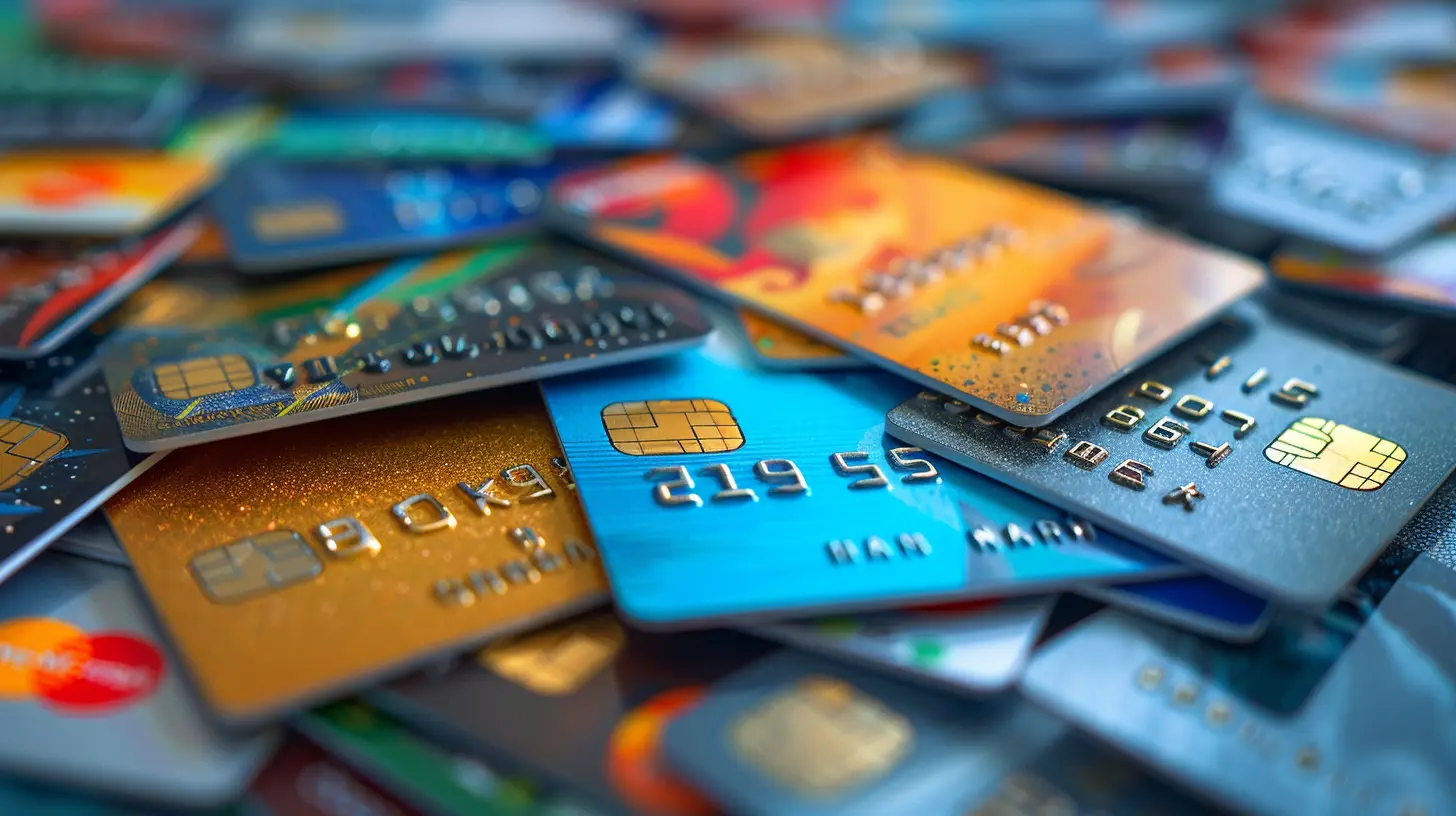Proven Strategies to Tackle Credit Card Debt
11 June 2025
Credit card debt can creep up on you like a slow leak in a tire—you don’t notice it at first, but before you know it, your finances are flat. If you're staring at your monthly statements wondering how it got this bad (and how to get out), you're far from alone. Millions of people deal with credit card debt every day. The good news? There's a light at the end of the financial tunnel. With the right strategy, discipline, and a bit of patience, you can take control of your credit and your life.
In this article, we’re diving into proven strategies to tackle credit card debt head-on. No fluff, no gimmicks—just real talk and practical steps.
Why Credit Card Debt Is So Difficult to Shake Off
Let’s kick things off by getting real—credit card debt is downright sneaky. The high-interest rates, the minimum payments that barely make a dent, the temptation to use the card for "just one more thing"—it all adds up.Unlike a mortgage or car loan, credit card debt isn’t attached to a tangible asset. You swipe, you owe, and if you’re only paying the minimum, that balance grows like a weed.
So why is it so tough to get out of? Two words: compound interest. It’s great when it's working for your savings account, but it's a nightmare when it’s working against your debt.
1. Face the Numbers Head-On
I know—this is the part where most people want to crawl under a blanket and pretend it doesn’t exist. But trust me, awareness is half the battle.Here’s what you should do:
- List every credit card you owe money on.
- Note each balance, the minimum payment, due date, and most importantly—the interest rate (APR).
- Add it all up.
Yes, it's painful. But seeing the full picture gives you power. You can’t fix what you haven’t fully acknowledged.
2. Stop the Bleeding: Freeze New Spending
If your boat is sinking, step one is to stop drilling new holes, right?That means stop using the cards. This might mean cutting them up, hiding them away, or locking them with a digital app. It’s tough, especially if you’ve relied on them for bills or essentials. But continuing to swipe is like trying to run a marathon while digging the track behind you.
3. Pay More Than the Minimum—Always
Minimum payments are the banks’ way of keeping you on a financial hamster wheel. Sure, they keep you from defaulting, but they barely make a dent in your principal balance.Paying just $20 or $50 more than the minimum can shave months—even years—off your debt timeline. Want proof? Use an online credit card repayment calculator and prepare to have your jaw drop.
4. Choose a Repayment Method That Works for You
There are two popular strategies here: the Snowball Method and the Avalanche Method.Snowball Method
- Focus on the smallest debt first.- Make minimum payments on all other cards.
- Throw extra cash at your smallest debt until it’s gone.
- Then move on to the next smallest, and repeat.
This method builds momentum—you get quick wins, which boost your motivation.
Avalanche Method
- Focus on the card with the highest interest rate first (regardless of balance).- Make minimum payments on everything else.
- Throw extra cash at this high-interest card.
- Once it’s gone, move to the next highest rate.
This saves you the most money in the long run. Choose the one that fits your personality—motivation or math.
5. Negotiate a Lower Interest Rate
Yep, you can actually call your credit card company and ask for a lower interest rate. Sounds wild, right? But companies would usually rather keep you as a customer than lose you to a balance transfer or outright bankruptcy.Here’s how to approach the call:
- Be polite but direct.
- Mention your history as a loyal customer.
- Highlight any recent financial hardship (without oversharing).
- Ask if they can offer a lower APR or any hardship programs.
Worst-case scenario? They say no. Best case? You save hundreds—or thousands—over time.
6. Consider a Balance Transfer With a 0% APR
If your credit score is decent, you might qualify for a balance transfer credit card. These cards often offer 0% APR for 12–18 months, giving you a solid breather from interest.But here’s the catch: these aren’t magic wands. Here’s what to watch out for:
- Transfer fees (usually 3-5% of the balance).
- What happens when the promotional period ends (hint: the interest spikes).
- Making sure you stop adding new charges to the card.
Use the interest-free period to aggressively pay down your balance. Every payment plows directly into the principal—this is how you win.
7. Find Extra Money in Your Budget
You don’t need to start selling organs. But you do need to shake a few things up.Look through your budget with a highlighter and ask yourself:
- Can I lower my streaming subscriptions?
- Can I cook more and eat out less?
- Is there a side hustle I’ve been thinking about starting?
- Do I really need that gym membership or can I jog around the block?
Even an extra $100 per month can significantly shorten your debt repayment timeline.
8. Dig Into Your Emergency Fund (If You Have One)
This might be controversial, but hear me out—if you’ve got $1,500 sitting in an emergency fund and you’re getting charged 24% interest on a card, it might make sense to use some of that cash to kill your debt.Why? Because earning 0.5% from a savings account while being charged 20x that in interest isn’t financially smart.
But only do this if:
1. You still have a small cushion.
2. You’ve got stable income.
3. You’re committed to not racking up the debt again.
9. Don’t Be Afraid to Ask for Help
There’s no shame in needing a hand. If the debt is overwhelming—like, “I-can’t-even-make-the-minimums” overwhelming—consider talking to a nonprofit credit counseling agency.They can help you with:
- A debt management plan (DMP).
- Lower interest rates via creditor negotiation.
- Consolidation of monthly payments into one fixed amount.
Steer clear of shady debt settlement companies. If they ask for upfront fees or promise to “erase” your debt, run for the hills.
10. Keep an Eye on Your Credit Score
Odd as it may sound, while you’re attacking your credit card debt, you also want to protect your credit score as much as possible. Why?Because your credit score affects:
- Your ability to get loans (and the interest you’ll pay).
- Your rental applications.
- Even job applications in some industries.
Here’s how you can keep it in good shape:
- Always pay at least the minimum on time.
- Don’t close old credit cards (they help your credit history).
- Keep your credit utilization below 30%.
11. Celebrate the Wins (No Matter How Small)
Crushed a card? Paid off $500? Built your emergency fund back up?Celebrate it.
Financial wins deserve recognition. You don’t need a shopping spree—maybe it’s a Netflix movie night or a pizza night in. Whatever keeps you motivated, do it.
12. Prevent a Relapse
Getting out of debt is one thing. Staying out is another.Once you’re back in the black, commit to using credit cards differently. Try these habits:
- Use your card only for planned purchases you can pay off each month.
- Use auto-pay so you never miss a due date.
- Review your monthly statements to catch bad spending habits early.
Think of your credit card like a chainsaw: powerful tool—but dangerous if misused.
Final Thoughts
Tackling credit card debt isn’t just about the numbers—it’s about mindset. You’ve got to believe that financial freedom is possible, and then take small daily steps to get there.Some months might be tough. Some days, you’ll feel like it’s not moving fast enough. But stick with it. Credit card debt doesn’t have to define your financial life. You’ve got this.
all images in this post were generated using AI tools
Category:
Debt ManagementAuthor:

Angelica Montgomery
Discussion
rate this article
3 comments
Thorne McCaw
Great insights! Tackling credit card debt can feel overwhelming, but your proven strategies offer practical steps to regain control. It's encouraging to see such valuable advice—keep up the fantastic work in helping others achieve financial freedom!
June 22, 2025 at 2:38 AM

Angelica Montgomery
Thank you for the kind words! I'm glad you found the strategies helpful. Together, we can make tackling debt a bit less overwhelming!
Cora Larsen
Practical tips can empower you to reduce credit card debt.
June 21, 2025 at 3:41 AM

Angelica Montgomery
Absolutely! Practical tips provide actionable steps that can significantly help individuals manage and reduce their credit card debt effectively.
Desiree West
Time to tame that plastic dragon! Let’s turn debt into a fairy tale ending, shall we?
June 12, 2025 at 5:03 AM

Angelica Montgomery
Absolutely! With the right strategies, we can transform debt challenges into success stories. Let’s get started!


